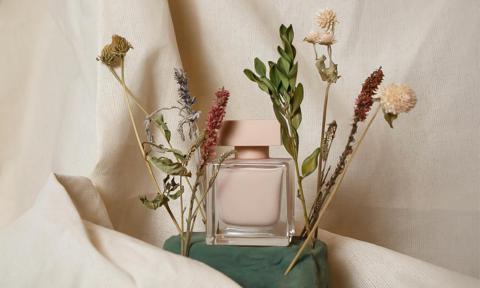
“For people who are trendsetters, and who want to differentiate themselves from others, it’s very important to have a signature scent,” says Philippine Courtiere, senior perfumer at Symrise Fine Fragrance. The French perfumer was in the capital just after announcing the “re-birth” of the fragrance house’s all-natural brand Maison Lautier 1795.
As we meet over coffee, Courtiere began our chat by offering to let me experience the “all-natural” fragrances first-hand. The brand from the South fo France prides itself on its ability to extract raw, natural scents from fruits that were not possible before. The perfumer explains that it was not possible because fruits mostly comprise of water and using a water distillation method to extract the fragrance would ultimately make the scent smell like nothing, just like water.
One by one, Courtiere took me through the scents, including apple, banana, bergamot, strawberry, and Madagascar vanilla, which smelled as if I was smelling the real fruit and not a manufactured, albeit natural, fragrance.
The perfumer credits the scent accuracy to their new sustainable process. “We’re trying to have more sustainable fragrances at the sourcing stage itself. Take our Madagascar plant, for instance, we know and we control how the plants are harvested in the best possible way without overusing the land. We invested in the local community and we look into creating synthetic ingredients from the waste created in the fruit industry,” she says.
I discovered in short order that there are few people who are as qualified as Courtiere to get a crash course on finding the elusive signature scent everyone is looking for. The perfumer tells me that she grew up surrounded by perfumes and the art of making them.
“I grew up in a house where perfumes were a big part of our everyday lives because my parents were also perfumers,” she says, “I was always smelling the fragrances that my parents used to work with. I remember my dad used to wear this perfume, Pour un Homme de Caron by this really old French brand called Caron. It was lavender and vanilla and it became one of my favourite smells.”
So without further ado, here are some important things to keep in mind while trying to find your signature scent, according to Courtiere.

Know your perfumes
Before setting out on the non-perilous quest to figure out your signature scent, you need to know the basics of a scent profile. Courtiere breaks it down for us, explaining, “The perfume is created like a pyramid. There are top notes, middle notes, and base notes and the process is organised like that. The first notes that you smell after spraying the perfume are the top notes. They are usually very light and volatile, like citrus, watery notes, or fruits. Then there are the hard notes which you smell afterwards, which are usually floral, spices, or balsamic. They are a bit heavier. Then there are the base notes, which are the heaviest, like musk or vanilla. This is how perfume is made, you need all three elements.”
She goes on to add, “Then you have the olfactory families. We classify perfumes like citrus, aromatics, orientals, floral orientals, or woody. These are the main notes. We have two other families, a bit more specific, they’re called Chypre and Fougere. These are characterised by their construction. In these two families, there will always be one or two ingredients that are used in all the fragrances, which is bergamot, patchouli, rose, and oakmoss.“
Layer your perfumes
Courtiere recommends understanding the aforementioned basics of perfume structures so that it can help you layer scents on top of each other. “It was always a big trend in countries like India and now it’s becoming very popular everywhere in the world. I, personally, love to do it. It allows you to create your own signature scent.”

Understand the difference between good and a bad perfume
This one might not be the most important step in landing on the perfect scent, but it does help in getting there. According to Courtiere, there are three top indicators for this, “The first impression after spraying will tell you how different the two perfumes are. The blooming, which is the first spray, is very important. Then there’s diffusion, which is how the perfume feels. And the third is its lasting power. How long the perfume stays on after you spray it is also a good indicator.”

Live with the scent for some time
One of the most important rules to follow when looking for a signature scent is to live with the scent for some time. Courtiere says that often fragrances need time to settle and they can transform into different scents, depending on their structure. She says it’s important to take time to understand how it makes you feel over a few hours, at least.
Avoid this common mistake
Courtiere reveals that the most common mistake people make while looking for new fragrances is to “smell with their eyes”. “When you look too much at the name, packaging or marketing descriptions, it’s not always true and if you rely always on this then you might not get the fragrance you want,” she says. Instead, pay more attention to the fragrance notes in the scent profile and how it makes you feel.
- Quick links
- perfume
- #HELLOExpertGuide






